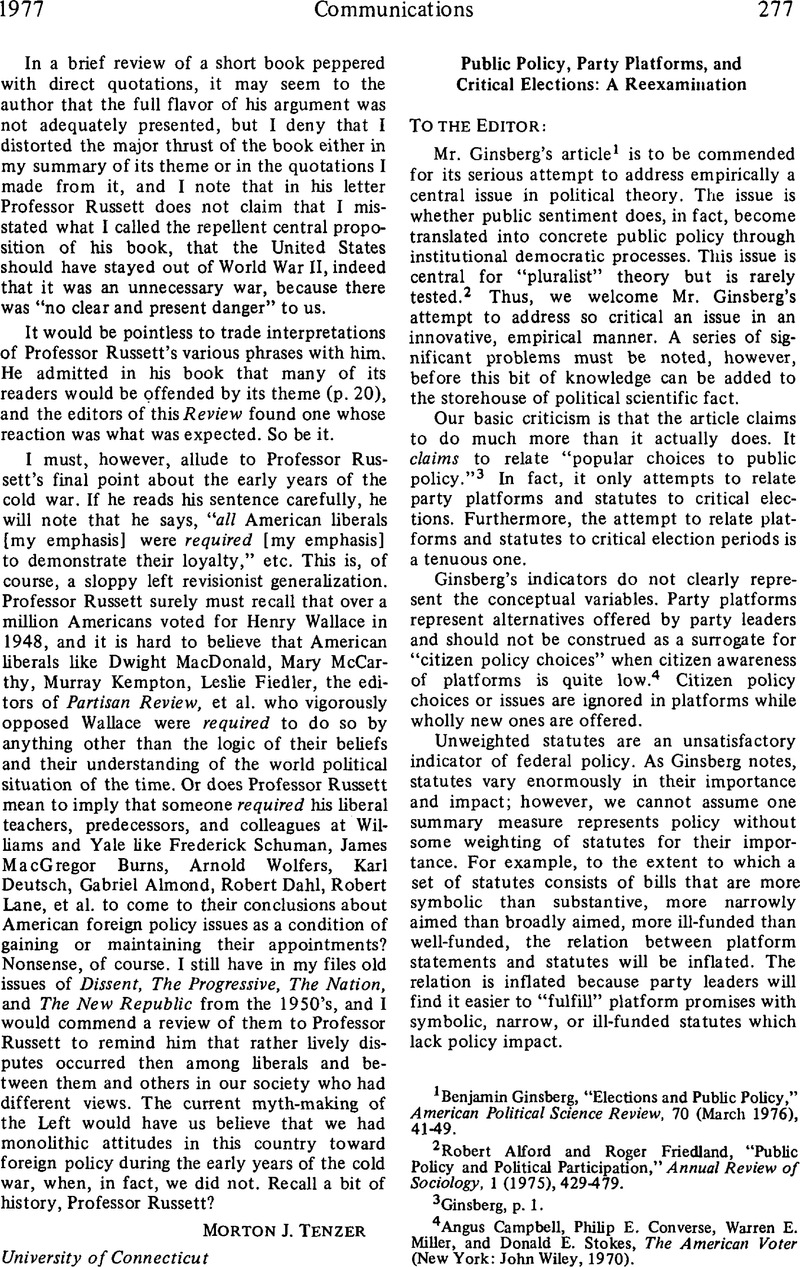Published online by Cambridge University Press: 01 August 2014

1 Ginsberg, Benjamin, “Elections and Public Policy,” American Political Science Review, 70 (March 1976), 41–49 CrossRefGoogle Scholar.
2 Alford, Robert and Friedland, Roger, “Public Policy and Political Participation,” Annual Review of Sociology, 1 (1975), 429–479 CrossRefGoogle Scholar.
3 Ginsberg, p. 1.
4 Campbell, Angus, Converse, Philip E., Miller, Warren E., and Stokes, Donald E., The American Voter (New York: John Wiley, 1970)Google Scholar.
5 Ginsberg, Benjamin, “Critical Elections and the Substance of Party Conflict: 1844 to 1968,” Midwest Journal of Political Science, 16 (November 1972), 603–625 CrossRefGoogle Scholar, discusses each formula component.
6 The vast number of years which show no party differences for the issues of redistribution, labor, ruralism, and universalism presented in Table 2 may be the result of one party's failing to take a stand and not due to a real lack of platform difference between the parties.
7 It was found that t = 2.01, significant at the 0.05 level, with df = 56.
8 We found some minor differences by dividing the entire period into “before 1900” and “after 1900.” Ginsberg's earlier article (Ginsberg, “Critical Elections”) even argues for some periodization effects.
9 We owe this insight to an anonymous reviewer.
10 The correlation between critical election periods (coded 1) with party platform changes is 0.332 and with total policy changes is 0.387.
11 Ginsberg, , “Elections and Public Policy,” p. 48 Google Scholar.
Comments
No Comments have been published for this article.